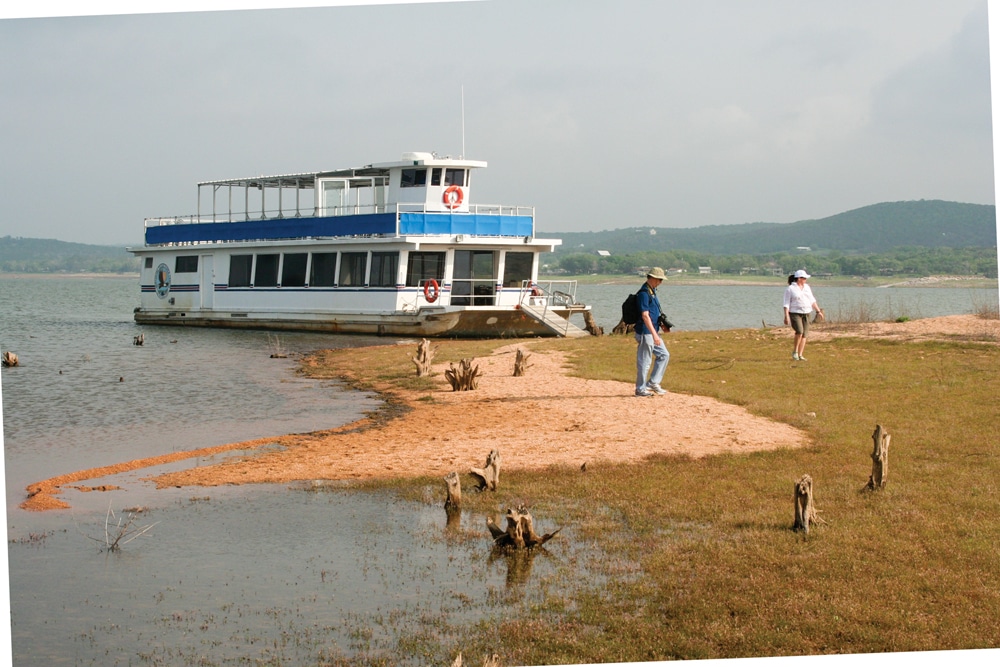The Colorado River created the Grand Canyon and keeps Arizona and much of Southern California from being a desert. We think of it as being the quintessential Colorado — unless you live in Texas. Texans have their own version of the Colorado River.
Like the iconic Colorado, the Highland Lakes have dams along their course that generate electric power and create recreational lakes in the Texas Hill Country, northwest of Austin. The largest of the Highland Lakes is Lake Buchanan. Its surface covers 35-square miles — that’s in a good year.
A pecking order exists among these man-made lakes regarding the allocation of water, especially when it’s scarce. Although it has seniority, being the oldest, Buchanan is at the bottom of the pecking order: The folks who control the Buchanan Dam will not allow a flood during heavy rains, but they will – and do – let the lake drop significantly during periods of drought.
Lakes that are higher on the pecking order, like nearby Lake LBJ, are kept at a fairly constant level by drawing on the “non-constant,” or the sacrificial, lakes like Buchanan.

Passengers left the boat on Shaw Island, that is normally under water, and walked to what remains of Bluffton.
I am on Lake Buchanan at a resort called Canyon of the Eagles. It’s situated on 940 acres and has a 14-mile network of hiking trails. I quickly discovered that a guy who tows his own accommodations makes out pretty good here. He pays 32 bucks a night to hook up and he also has full use of the resort facilities, while a guest at the resort pays 160 bucks a night. The only thing the guest gets that I probably could use is a fresh towel every day.
This region of Texas is in its second year of serious drought. The lake is down as much as 28 feet. A big rain could change that in a couple of days. It will happen; it always does, but not today.
To get an authoritative view of the lake, I went out on a Vanishing Texas River Cruises boat tour. Minutes out from the pier, it became obvious that there are stories about this lake being uncovered as its water recedes. The tops of dead trees were coming out of the lake on both sides of the boat.
“On May 27th, 1937, they closed the gates on the dam and the river began milling around, creeping up the 339,000 tons of concrete that sprawled for two miles across its path. The lake, however, was filling up quicker than they planned,” boat tour guide Tim Mohan said. “The guys who were clearing the trees from what was to be the lake bottom, using crosscut saws and axes, just couldn’t keep ahead of the rising water. So what you see are what they couldn’t cut.
“One fellow was even out here in a boat harvesting his crop of pecans. He tied sheets to the lower branches to catch them,” Mohan said.
“These were local guys cutting homegrown trees that had stood for a thousand years … part of their identity, you might say. They took no pleasure in their work. They were also clearing away their homes and memories. All they knew of their lives was soon to be at the bottom of a lake.”
We approached a sandy flat that would normally be under water. Slowly, the skipper nosed the 120-passenger boat against the beach. Tim dropped a ramp so we could go ashore.
We walked to what remained of a town called Bluffton — just some stone foundations, but it was enough to write an epitaph: The cost of progress can be painfully personal.
Welcome to America’s Outback




